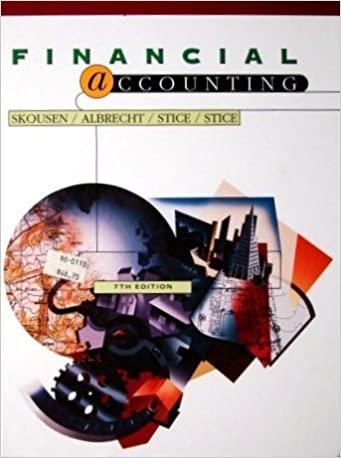Answered step by step
Verified Expert Solution
Question
1 Approved Answer
This Pricing Exercise is a combination of a variety of concepts found in the text. Pricing includes many considerations - the 5 Cs of Pricing
This Pricing Exercise is a combination of a variety of concepts found in the text. Pricing includes many considerations - the 5 Cs of Pricing - Company, Customer, Competition, Channel, Costs.
In addition, certain companies have a particular way in which they approach pricing - some companies are profit oriented, some are competitively oriented, other companies are customer value oriented. But no matter what orientation a company is, a baseline price should be calculated from which a "what if" analysis can be done in terms of what would happen if the price is raised or lowered from that baseline.
This exercise has 3 parts. The Part 1 is a Cost-Based Pricing Model. Businesses have two major cost to be considered - Fixed Cost (FC) which is always expressed as an annual amount, and Variable Cost (VC) which is always expressed as a per unit or per item amount. Fixed Costs do not change no matter how much demand or sales forecasts change. Variable Costs change based on on how many units are forecasted to be demanded or sold.
Therefore: Total Costs = FC + Total VC (VC per unit X # of units demanded or forecasted to sell)
The steps to calculate the correct Selling Price (SP) and the Break Even Quantity (BE) are a three step process, however, we first have to calculate what I am calling a Unit Cost (UC) which is a more representative cost to base our Selling Price on because it is the Variable Cost plus some portion of the Fixed Costs. It should be noted that Unit Cost is not an accounting term - it is a marketing term. Marketers calculate a Unit Cost to base their Selling Price on. Selling Price then is the Unit Cost divided by 1 minus the return (marketers often refer to the Return as a target profit, target margin, or a return). Finally, Break Even is calculated by dividing the Fixed Costs by the Selling Price minus the Variable Costs. The Break Even quantity final answer is always rounded up no matter how small the decimal amount, since we cannot sell a part of a product. The denominator of the BE calculation (SP-VC) is the Contribution per Unit (or Contribution Margin which is an accounting term) or how much each unit or product sold contributes to the bottom line.
1. UC = VC + FC
Sales (Qty)
2. SP = UC
1 Return
3. BE = FC
SP VC
However, marketers rarely only want to know what the Cost-Based Selling Price would be. They want to know how much they REALLY should sell something for depending on what they are trying to do - gain market share quickly with a lower price, or capture more profit and recover investment dollars with a higher price. Of course, the law of Supply & Demand says that if I raise the Selling Price from the Cost-Based Price demand will fall; if I lower the Selling Price from the Cost-Based Price demand will increase. The question is whether the change in demand will effect the overall profitability for the product which is largely based on the elasticity of that particular product. To answer this question requires a "what if" analysis.
Once you complete the three step process as outlined above, you can then do a "what if" by calculating what will happen to overall profitability by changing the selling price up or down, taking into account that the price change will affect the overall demand or forecasted sales, and then completing the table on Part 2 of this exercise. On the table in Part 2, I have given you the potential new selling prices in column one, with the resulting demand or forecasted sales in column three. You should complete the rest of the table and answer all the questions on both Part 1 and Part 2.
Part 3 of this exercise then calculates the Elasticity (EoD) of this particular product, which is the % CHANGE IN DEMAND divided by the % CHANGE IN PRICE. The Elasticity final answer is always expressed as an absolute number. If it is 1 the product is elastic.The mathematical elasticity of the product should confirm why this product acts the way it does and helps to explain the results from the table in Part 2. Relatively inelastic products can usually be pushed to higher prices before it negatively effects profitability. Relatively elastic products can show losses at both a higher price point if demand drops so much that revenue falls, or a lower price point if demand rises so much that variable costs outstrip revenue
You can type your answers into the document itself and then reattach it with your answers. I need to see all your work in order to give you partial credit.




Note: I need help with thi assignment please if anyone can answer this question for me thag would be appreciate it. Also please look at the pictures to answer the question. Thank You!
Step by Step Solution
There are 3 Steps involved in it
Step: 1

Get Instant Access to Expert-Tailored Solutions
See step-by-step solutions with expert insights and AI powered tools for academic success
Step: 2

Step: 3

Ace Your Homework with AI
Get the answers you need in no time with our AI-driven, step-by-step assistance
Get Started


